Daily Lotto results: Wednesday, 16 April 2025
Such traditional huts have long been used to hang and desiccate the fruit, but now the keshmesh khanas — the Dari term for raisin houses — are getting a facelift as Afghanistan looks to improve its yield.
The country once accounted for 10 percent of the global raisin market, but nearly four decades of conflict have driven its share of the world market down to just 2-3 percent.
In a bid to boost productivity and earnings, the agriculture ministry and aid groups are financing new modern khanas.
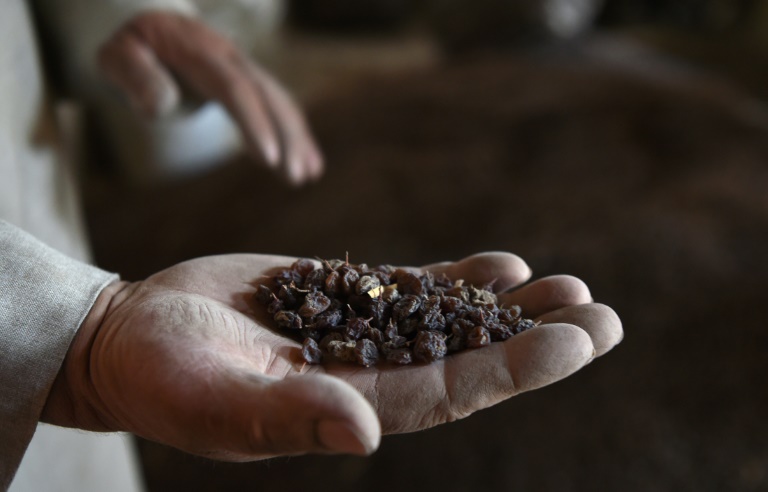
Afghanistan once accounted for 10 percent of the global raisin market, but nearly four decades of conflict have driven its share of the world market down to just 2-3 percent
“The new raisin house has much more capacity and they have a single purpose (to dry the grapes),” Gulzar told AFP inside the rustic khana built by his father in Dhi Sabz district near Kabul.
The Afghan agricultural sector, is the main driver of the economy and biggest employer.
Hajji Malek Zabet shows off his new brick raisin house near the Afghan capital. Inside the cement-floored room are neat rows of metal hanging racks where grapes drape down like vines in a jungle.
Afghanistan boasts nearly 100 varieties of grapes which are grown across the country and celebrated in popular poetry, nursery rhymes and proverbs.
In the absence of a winemaking industry, which is prohibited in the Islamic country, many farmers turn their grapes into raisins which are easier to conserve and bring a higher price.
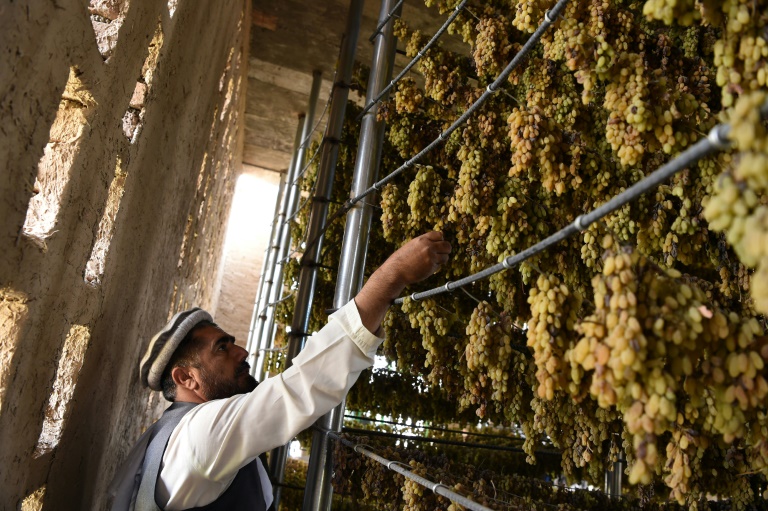
Fresh grapes sell for an average of 300 afghanis (about .50) for seven kilogrammes, while just one kilogramme of raisins fetches more than 1,000 afghanis
Fresh grapes sell for an average of 300 afghanis (about $4.50) for seven kilogrammes, while just one kilogramme of raisins fetches more than 1,000 afghanis.
Though the profits are nothing compared to the amount farmers can reap from what is now Afghanistan’s biggest export: opium, the lifeblood of the Taliban insurgency and an economic lynchpin for many Afghans.
A recent UN report showed that the area under poppy cultivation has hit a record high, underscoring the importance of providing farmers with successful alternatives.
– Holding to the old ways –
Afghanistan produced nearly 900,000 tonnes of grapes last year. However it only exported a fraction — 111,000 tonnes of fresh grapes and 15,000 tonnes of raisins, according to government data.
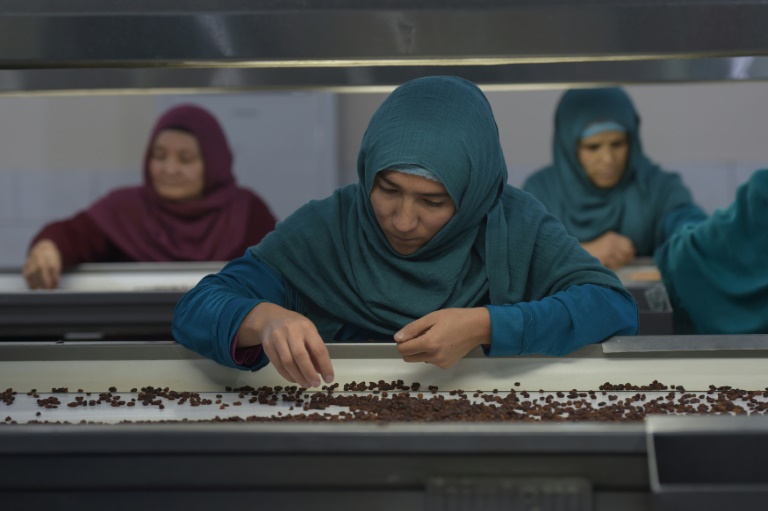
Afghanistan produced nearly 900,000 tonnes of grapes last year. However it only exported a fraction — 111,000 tonnes of fresh grapes and 15,000 tonnes of raisins, according to government data
A lack of cold storage facilities and strict import requirements in many overseas markets means the bulk of Afghanistan’s grape crop ends up being sold in local bazaars at harvest time, causing a glut and driving down prices.
“Basically these new keshmesh khanas have three effects: they remove fresh grapes from the market and improve the quality of the process and product, and support prices,” said Abdul Samad Kamawi, national horticulture coordinator at the agriculture ministry.
But even with the improvements, Afghanistan’s rudimentary growing and processing methods means accessing export markets beyond Pakistan, India, the UAE and Russia is difficult.
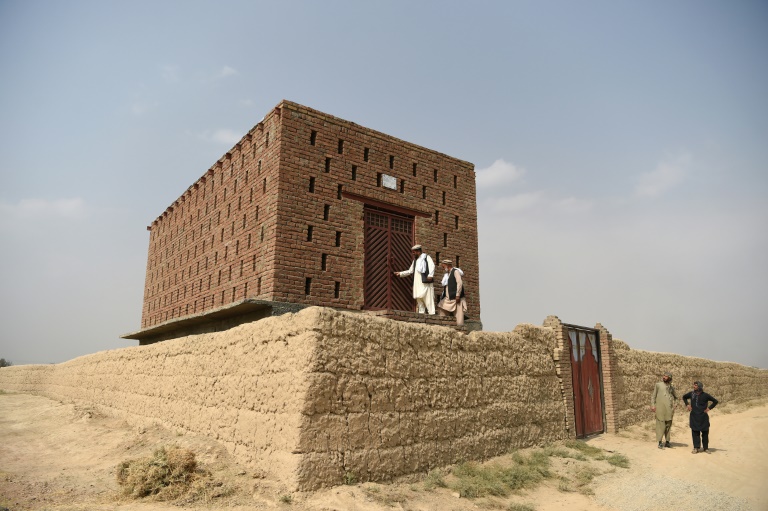
New modern brick raisin houses are replacing the traditional mud huts used in Afghanistan. Inside the cement-floored room are neat rows of metal hanging racks where grapes drape down like vines in a jungle
“Despite their know-how Afghans are still struggling to meet European criteria which are increasingly stringent,” a Western importer told AFP.
Some companies are going hi-tech to lift the quality of their raisins.
Tabasom, a major exporter, has two production lines in Kabul equipped with X-ray machines and metal detectors to ensure only the best raisins are packed and sent abroad.
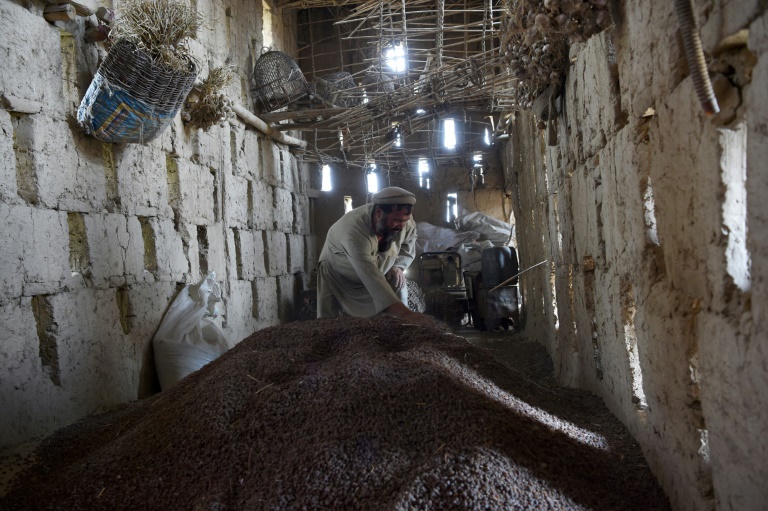
Afghanistan boasts nearly 100 varieties of grapes which are grown across the country and celebrated in popular poetry, nursery rhymes and proverbs
The drying process in the new brick and cement khanas is quicker and cleaner, but Gulzar is stubbornly keeping his earthen raisin house where his family often seeks shelter during the hot summer months.
“They are cooler,” he said, sitting happily on the dirt floor surrounded by hay and bunches of garlic.
Download our app